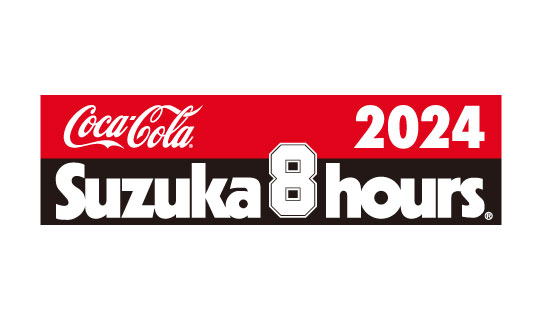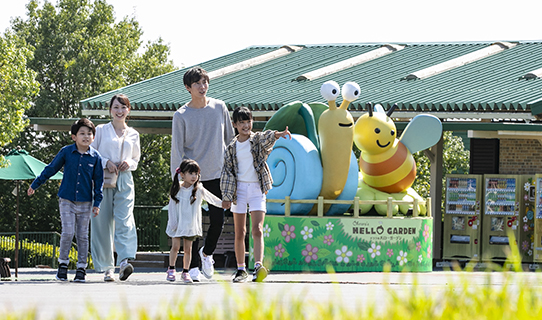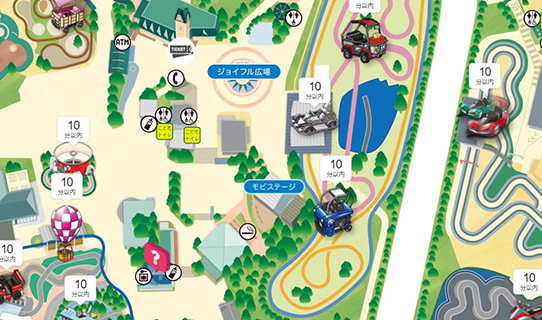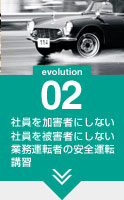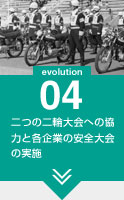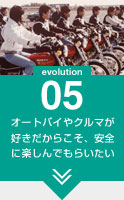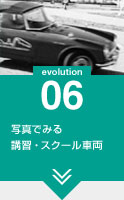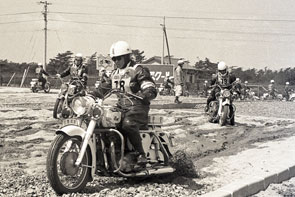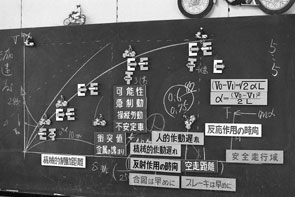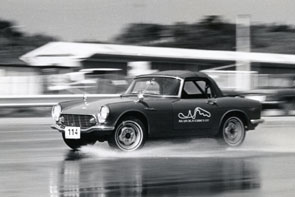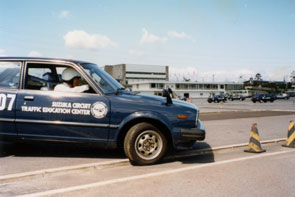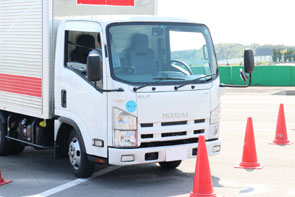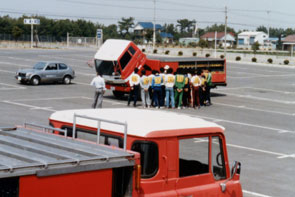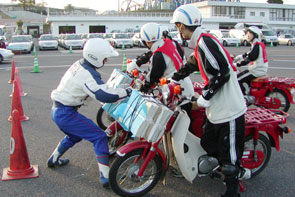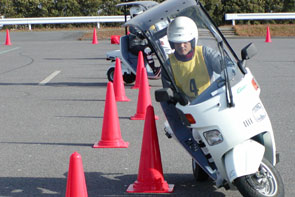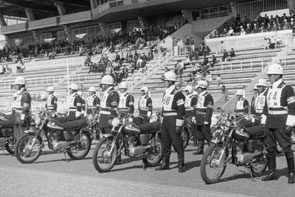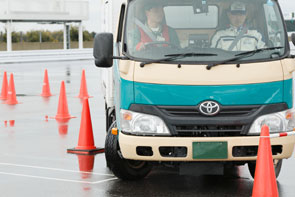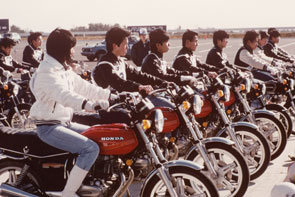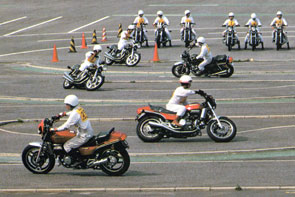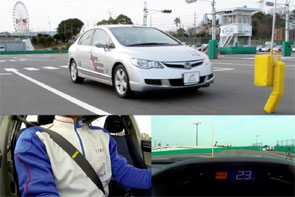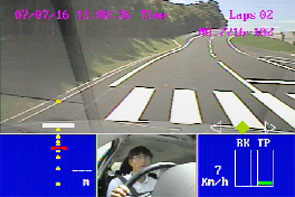Traffic Education Center TopAbout Traffic Education CenterSuzuka Circuit Traffic Education Center 50 Years of History
With the opening of the highway, the motorcycle police officers were required to acquire advanced driving skills and knowledge to respond to high-speed driving that comes with danger.
Training for experienced white motorcycle officers.
"Driving, turning, and stopping" are the basics of driving that are thoroughly practiced, and the theory of being able to drive safely even at high speeds is explained in lectures.
As a result of the training, while general traffic accidents have been increasing, accidents involving motorcycle police officers have been decreasing.
After experiencing a decrease in accidents due to implementing proper education, the administrative authorities made it the starting point for subsequent traffic education.
This is the beginning of the ongoing safe driving training, and it is also the origin of Suzuka Circuit Traffic Education Center.
In response to a request from a company that focuses on the effectiveness of motorcycle police training, we have been conducting safe driving training for companies since 1965.
Afterwards, we have received requests from government agencies, companies, schools, etc. that use motorcycles and cars for their daily work, and have been conducting numerous training sessions every year to prevent traffic accidents in business operations.
We provide support for all aspects of corporate traffic safety, including not only training for drivers, but also creating internal rules and qualification systems for company vehicles, as well as training for safety driving instructors.
Suzuka Circuit Traffic Education Center, which started with emergency vehicle training, has been conducting various training courses for different drivers based on their specific needs.
As a vehicle, we not only support general two-wheeled and four-wheeled vehicles, but also large trucks, high-altitude work vehicles, mobile sales vehicles, vehicle transport trailers, three-wheeled motorcycles, and delivery motorcycles. We are constantly creating and evolving new training programs tailored to the actual use and business content of corporate vehicles, such as night driving, emergency driving, loading driving, and vehicle guidance methods by driving assistants.
Participants will experience their own position and the position of others through practical exercises, discuss theories, and come to conclusions about what they should do. We believe that experiencing, thinking, and coming to conclusions on their own will lead to "sustainable safe behavior" with awareness and confidence.
During the training of white bikes and patrol cars, the need for holding a competition to further improve safe driving was considered, and Suzuka Circuit Traffic Education Center has agreed to cooperate in the competition's competition methods, teaching methods, and creation of tasks.
In 1969 (Showa 44), the first National Police Agency-sponsored "1st National Police Motorcycle Safe Driving Competition" was held, and it was held at Suzuka Circuit until the 24th competition in 1992 (Heisei 4).
In addition, the two-wheeled vehicle safety driving contest (currently the National Two-Wheeled Vehicle Safety Driving Competition) held in 1968 (Showa 43) was moved to Suzuka Circuit in 1978 (Showa 53) and continues to be held there today.
Through these two events, not only has driving technique improved, but the importance of helmets and gear has also been recognized, contributing to the development of technology for police motorcycle uniforms and riding gear, and having a significant impact on improving rider safety.
After that, we have held safe driving competitions for the delivery and transportation industries. We also continue to support safe driving competitions for driving instructors at driving schools nationwide, as well as safety conferences for various companies.
Participating in the event leads to improvement in safe driving skills and awareness, as well as improvement in coaching abilities for instructors.
In the 1970s, biker gangs became a major social issue and young people who rode motorcycles were often stereotyped as being part of these gangs.
So, we have expanded the safe driving training that we have been conducting for government agencies and companies to high school students. There is a belief that "instead of keeping motorcycles away from young people, it is necessary to provide safe education for youth to become healthy participants in traffic."
In 1978, as the number of motorcycle owners exceeded 10 million and the number of motorcycle accident fatalities and injuries increased rapidly, "Honda Motorcyclist School (HMS)" was launched to focus on educating beginner motorcycle riders.
This is a Motorcycle School where you can safely experience the basic operation of medium and large motorcycles and the limits of people and motorcycles using actual vehicles after obtaining a license.
In the 1990s, the number of motorcycle fatalities began to decrease, while traffic accidents involving four-wheel vehicles became a social issue.
In the midst of such, the "Honda Driving School (HDS)" for four-wheel drivers started in 1991.
In 1994, the "Parents and Children Enjoy Motorcycles" event began as a way for families to share the experience of riding motorcycles together, while also learning about traffic rules and manners and strengthening family bonds.
We are here to assist those who love motorcycles and cars to continue riding safely and enjoyably for a long time, by improving their driving skills and promoting a safety mindset.

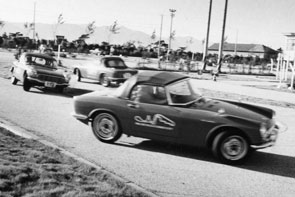
S600
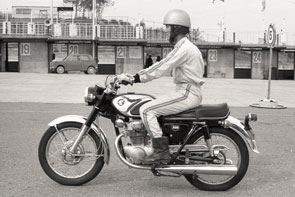
Dream CB450

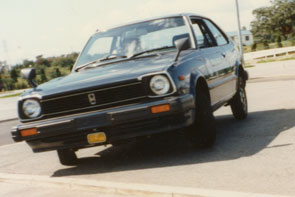
SUPER CIVIC
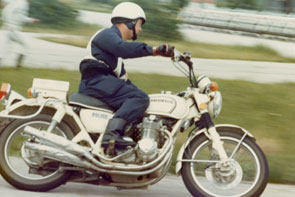
Dream CB550

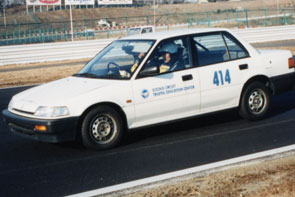
GRAND CIVIC
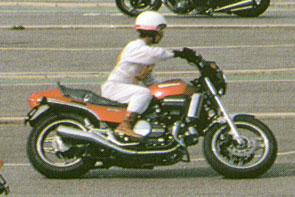
VF750 Saber

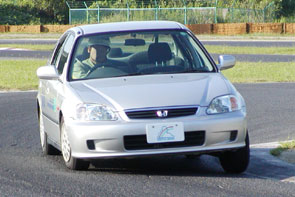
MIRACLE CIVIC Ferio
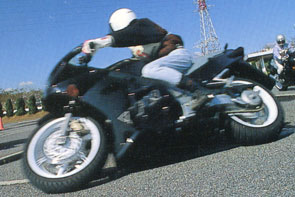
VFR750F

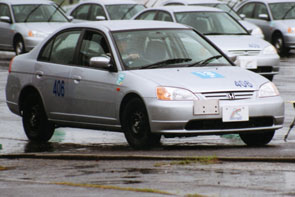
CIVIC Driving Specification
(Until 2006)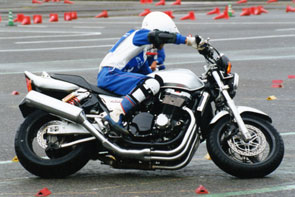
CB1300SF
(Until 2007)
As the traffic environment changes and car safety technology evolves, Suzuka Circuit Traffic Education Center continues to evolve, including a complete renewal in 2007, in order to provide a traffic education environment that can meet the diverse needs of participants.
Utilizing detailed data and recorded videos shown by the computer system, we have developed training programs that aim to improve awareness and behavior by allowing participants to "realize their own driving". These programs include ones that focus on night driving, which is prone to serious accidents, and ones that aim to understand various safety devices equipped in cars. We continue to develop training programs that adapt to the changing traffic environment.
No matter how much car safety technology advances, it is still "people" who are driving the car.
"By fostering drivers with morals, not just driving skills, including attitudes towards driving and consideration for those around them, we aim to ensure the safety of all people coexisting in a mobility society."
Based on the unchanged belief since its founding, Suzuka Circuit Traffic Education Center has evolved together with Honda.


